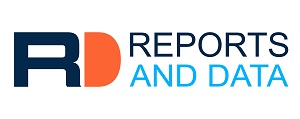Alcohol Ethoxylates Market to Reach USD 12.4 Billion by 2034, Driven by Rising Demand for Eco-Friendly Products

Reports And Data
Alcohol Ethoxylates Market is set for steady growth, with market size expected to rise from USD 7.2 billion in 2024 to USD 12.4 billion by 2034
VANCOUVER, BRITISH COLUMBIA, CANADA, August 18, 2025 /EINPresswire.com/ -- The global Alcohol Ethoxylates Market is set for steady growth, with market size expected to rise from USD 7.2 billion in 2024 to USD 12.4 billion by 2034, reflecting a compound annual growth rate (CAGR) of 5.5%. This growth is fueled by increasing demand for sustainable cleaning agents, personal care products, and industrial solutions.Key Growth Drivers
Eco-friendly demand: Consumers are increasingly seeking biodegradable and environmentally safe products. In 2024, global demand for green surfactants grew by 12%, boosting adoption of alcohol ethoxylates.
Regulatory support: Governments across regions are pushing for safer chemical formulations. The European Union’s REACH regulations, for instance, are encouraging industries to adopt alcohol ethoxylates.
Technology advancements: Companies are investing in green chemistry and new production technologies to make products more efficient and cost-effective. Major players like BASF SE, Huntsman Corporation, and Clariant AG are leading with R&D investments and partnerships.
You Can Download Free Sample PDF Copy Of This Report At: https://www.reportsanddata.com/download-free-sample/002360
Market Highlights
Applications: Household and industrial cleaning is the largest application segment, supported by rising hygiene awareness and demand for sustainable detergents. Personal care is the fastest-growing segment, driven by consumers’ focus on safe and natural ingredients.
Regional insights: Asia-Pacific is expected to dominate growth, led by industrial expansion and urbanization in China and India. North America and Europe will continue focusing on sustainable innovation despite higher compliance costs.
Volume growth: Market volume is forecasted to increase from 1.5 million tons in 2024 to 2.3 million tons by 2034, growing at a CAGR of 4.5%. This reflects not just rising demand but also a shift toward premium, value-added products.
Alcohol Ethoxylates Market Segmentation
By Product Type
Fatty Alcohol Ethoxylates
Lauryl Alcohol Ethoxylates
Stearyl Alcohol Ethoxylates
Oleyl Cetyl Alcohol Ethoxylates
By Application
Household Cleaning
Industrial Cleaning
Personal Care
Textile Processing
Agrochemicals
By End User
Detergents and Cleaners
Personal Care and Cosmetics
Textile Industry
Agriculture
Price Trends
Prices of alcohol ethoxylates have shown fluctuations due to raw material shortages and energy costs. In early 2025, prices rose by 8% as feedstock supplies tightened. Regional differences remain, with Asia-Pacific benefiting from lower costs and Europe facing higher prices from stricter regulations and energy expenses. To manage volatility, more companies are adopting AI-based pricing models, improving profit margins and operational efficiency.
Top 10 Companies
BASF SE
Huntsman Corporation
Clariant AG
Dow Chemical Company
Stepan Company
Sasol Limited
India Glycols Limited
Oxiteno
Evonik Industries
Solvay S.A.
Opportunities and Challenges
Opportunities: The global shift toward green and sustainable products, along with increased investment in specialty chemical R&D, is creating significant opportunities. In 2024, R&D spending in this sector rose by 18%, underlining the push for innovation.
Request customization on the report @ https://www.reportsanddata.com/request-customization-form/002360
Challenges: Volatile raw material costs remain a concern, with ethylene oxide prices rising 10% in 2024. Additionally, compliance with environmental regulations adds costs, estimated to increase operational expenses in Europe by 15%. Supply chain disruptions, driven by geopolitical tensions and pandemic-related challenges, also pose risks to manufacturers.
John W
Reports and Data
+1 2127101370
email us here
Legal Disclaimer:
EIN Presswire provides this news content "as is" without warranty of any kind. We do not accept any responsibility or liability for the accuracy, content, images, videos, licenses, completeness, legality, or reliability of the information contained in this article. If you have any complaints or copyright issues related to this article, kindly contact the author above.
Tinplate Packaging Market to Reach USD 3,079 Million by 2035 | AJ Packaging, Ball Corporation, Ardagh Group Lead
DisplayRide & Tarsus Partner to Bring the World’s Most Advanced AI Dashcam solution to Canada
RefillGenie’s Affordable Online Prescription Refills Now Available in 47 States
Więcej ważnych informacji
 Jedynka Newserii
Jedynka Newserii

 Jedynka Newserii
Jedynka Newserii

Prawo

Kolejne polskie miasta chcą być przyjazne dzieciom. Planują stworzyć najmłodszym dobre warunki do rozwoju
Cztery miasta w Polsce posiadają tytuł Miasta Przyjaznego Dzieciom nadany przez UNICEF Polska. Dziewięć kolejnych miast czeka na certyfikację, a w ostatnich miesiącach do programu zgłosiło się kilka następnych. Na całym świecie inicjatywa została przyjęta już w ponad 4 tys. samorządów, a w Hiszpanii objęła połowę dziecięcej populacji miast. Program UNICEF-u ma na celu zachęcenie włodarzy do traktowania najmłodszych obywateli w sposób podmiotowy, respektowania ich praw i zaproszenia ich do współdecydowania o przyszłości.
Przemysł
W ciągu roku w Polsce ubyło 500 przedsiębiorstw odzieżowo-tekstylnych. Problemem są spadki zamówień z Europy Zachodniej i wzrost kosztów

Wartość rynku odzieżowego w Polsce wynosi 66,9 mld zł, z czego 10 mld zł to wartość krajowej produkcji – wynika z danych PIOT. Od czasu pandemii branża mierzy się z szeregiem wyzwań, wśród których najpoważniejsze to wzrost kosztów pracy i produkcji, przerwane łańcuchy dostaw i spadek zamówień – zarówno w kraju, jak i za granicą, a także wzrost nieuczciwej konkurencji na rynku, czyli głównie importu z Chin. Skala wyzwań sprawia, że w ubiegłym roku z rynku zniknęło 500 firm. Producenci odzieży apelują do rządu o wsparcie.
Handel
D. Obajtek: Orlen powinien być o 30–40 proc. większą spółką. Byłoby to z korzyścią dla konsumentów

Orlen jest największym polskim przedsiębiorstwem. Jego przychody ze sprzedaży w 2024 roku wyniosły blisko 295 mln zł, a rok wcześniej – ponad 372 mln – wynika z raportu Rzeczpospolitej „Lista 500”. W ubiegłorocznym rankingu Fortune 500 uwzględniającym największe korporacje znalazł się na 216. miejscu na świecie i 44. w Europie. Według Daniela Obajtka, europosła PiS-u i byłego prezesa Orlenu, spółka powinna jeszcze urosnąć, tym samym gwarantując konsumentom szereg korzyści, a także przyspieszać inwestycje m.in. w obszarze petrochemii i energetyki zero- oraz niskoemisyjnej.
Partner serwisu
Szkolenia

Akademia Newserii
Akademia Newserii to projekt, w ramach którego najlepsi polscy dziennikarze biznesowi, giełdowi oraz lifestylowi, a także szkoleniowcy z wieloletnim doświadczeniem dzielą się swoją wiedzą nt. pracy z mediami.








.gif)

 |
| |
| |
|